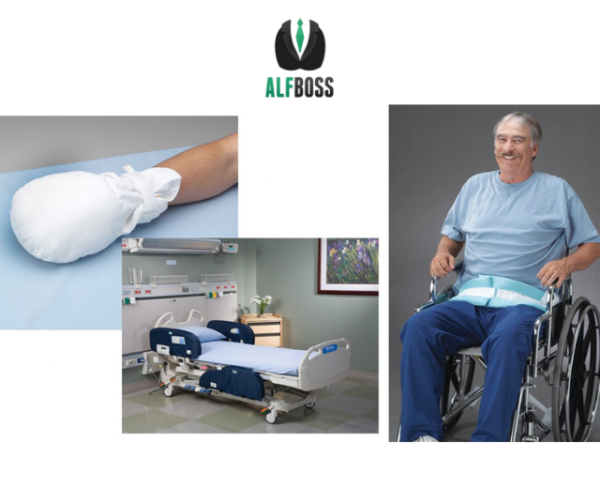
Although there may be times where you feel it may be needed to restrain a resident due to their behavior, I suggest you restrain yourself, because those practices are outlawed by the Maryland Office of Health Care Quality. See below for what OHCQ considers restraints in the ALF setting:
.37 Restraints.
A. The resident has the right to be free of restraints used in violation of this chapter.
B. A protective device as defined in Regulation .02B of this chapter is not considered a restraint.
C. Improper Use of Chemicals or Drugs. Chemicals or drugs may not be used for residents in the following ways:
(1) In excessive dose, including duplicate drug therapy;
(2) For the excessive duration, without adequate monitoring;
(3) Without adequate indications for its use; or
(4) In the presence of adverse consequences which indicate the dose should be reduced or discontinued.
D. Improper Use of Physical Restraints. Residents may not be physically restrained:
(1) For discipline or convenience; or
(2) If a restraint is not ordered by a physician to treat the resident’s symptoms or medical conditions.
E. Restraint Orders.
(1) Any restraint shall be ordered by a physician and shall specify:
(a) The purpose of the restraint;
(b) The type of restraint to be used; and
(c) The length of time the restraint shall be used.
(2) A resident may not have an as-needed restraint order.
(3) Orders for the use of restraint shall be time-specific.
(4) A resident may not remain in restraint for more than 2 hours without a change in position and toileting opportunity.(5) If an order for the use of a restraint is to be continued, the order shall be renewed at least every 7 days by a physician.
(6) The delegating nurse shall provide training to staff in the appropriate use of the restraint ordered by the
physician.
F. Bed Rails. Bed rails may be considered restraints depending upon the reason for the use of bed rails and how
the bed rails are used. This determination is based upon the resident and the effect that bed rails would have upon
the resident, as documented in the resident’s record.
G. The program shall notify the resident’s family or the resident’s representative each time restraint is used.
Restraints will be defined as:
• Physical Restraint—any manual method, physical or mechanical device, material, or equipment
attached to or adjacent to a resident’s body that the individual cannot easily remove which
restricts freedom of movement or normal access to the body and is not used as an assistive
device. The use of physical restraints is prohibited in ARCPs.
• Chemical Restraint—a psychopharmacologic drug that is used for discipline or convenience and
not required to directly treat medical symptoms or medical diagnoses. The use of chemical
restraints is prohibited in ARCPs